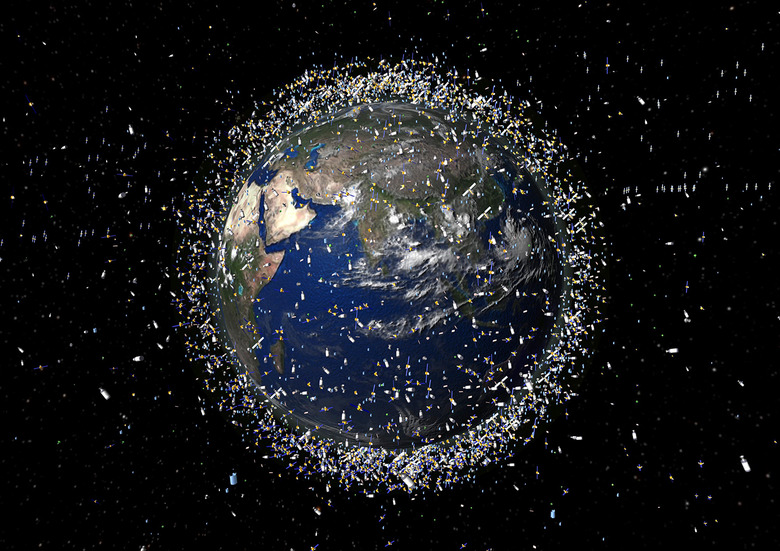Will This Finally Be The Solution To Space Junk?
Space junk is a very real problem. It might sound silly to think that the space around Earth is actually getting too cluttered with junk, but it's true. There are thousands of tons of old spacecraft, defunct satellites, and bits and pieces of manmade trash orbiting our planet, and that material poses some very real risks to future missions, including crewed missions to the Moon, Mars, and perhaps beyond.
Researchers have long conceptualized different systems for dealing with orbiting trash. Proposals have included huge nets and even harpoons to snag the larger pieces of debris and drag them back down to Earth where the heat of reentry would effectively vaporize them. Unfortunately, none of those missions has been a total success, and some have even threatened to create more space junk. Now, a Japanese company is launching a test mission to see whether its space trash collector works as well as it hopes.
As NPR reports, the ELSA-d — which stands for End-of-Life Services by Astroscale — is a project by Japanese company Astroscale that could result in the first feasible space junk cleanup system. The idea is to send a spacecraft into orbit to dock with and eventually destroy large pieces of space debris. The company will test this capability by deploying a test object and then tasking the docking spacecraft by tracking it down and connecting to it using magnetic plates.
The spacecraft will perform several of these "catch-and-release" maneuvers over a six-month period, demonstrating whether or not the system is reliable enough for future consideration. It all sounds pretty great, but there's a very big catch.
Unfortunately, ELSA-d isn't designed to hunt down pieces of space junk that are already cluttering up the area around our planet. Instead, it relies on docking plates that would have to be installed on future satellites before they are launched. Then, when the satellite is no longer in use, and Astroscale spacecraft would track it down and deorbit it.
That's a pretty significant shortcoming, especially since most of the space junk collection systems that have been tested so far are designed to take down the junk that is already causing a problem. That being said, none of those systems have shown themselves to be very reliable, so building satellites with end-of-life deorbiting in mind may ultimately be what we need if we hope to solve the space junk problem at all.
In any case, it'll be interesting to see how well the ESLA-d system performs, and if it is indeed capable of catching and releasing its test "junk" multiple times during its months in orbit around Earth. Whatever happens, we need a space junk cleanup solution and we need it sooner rather than later, or we risk catastrophic consequences.
